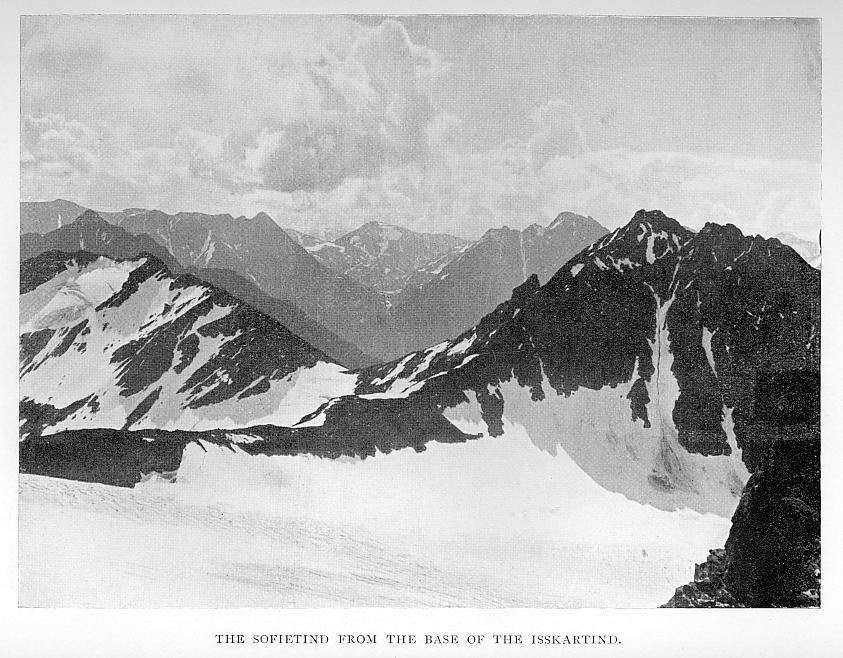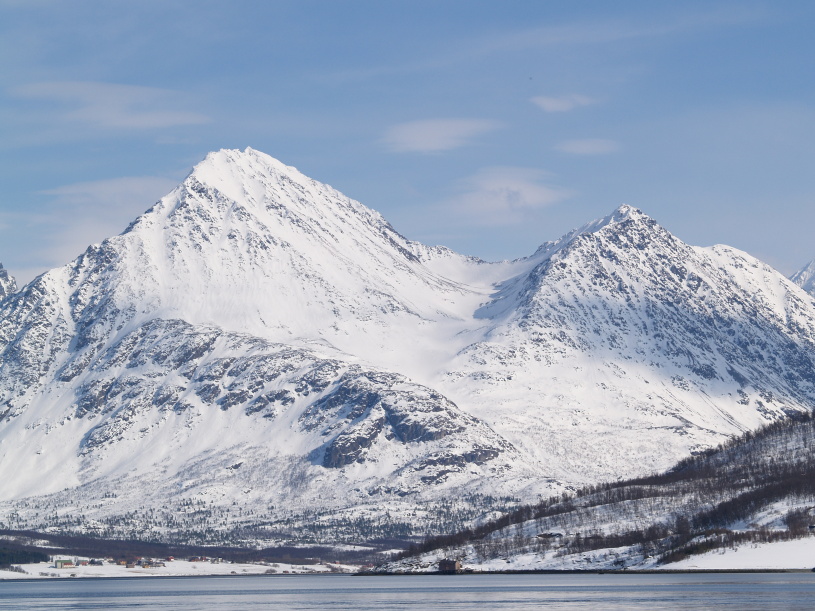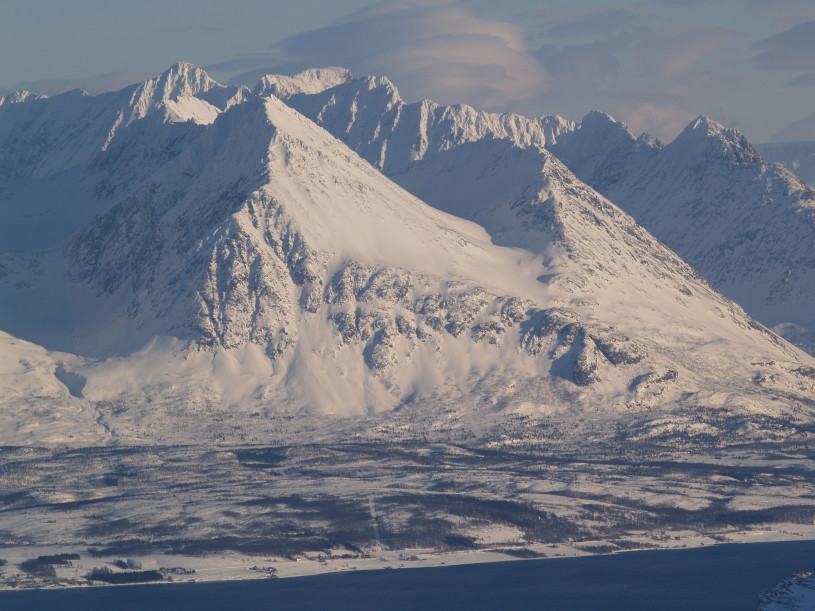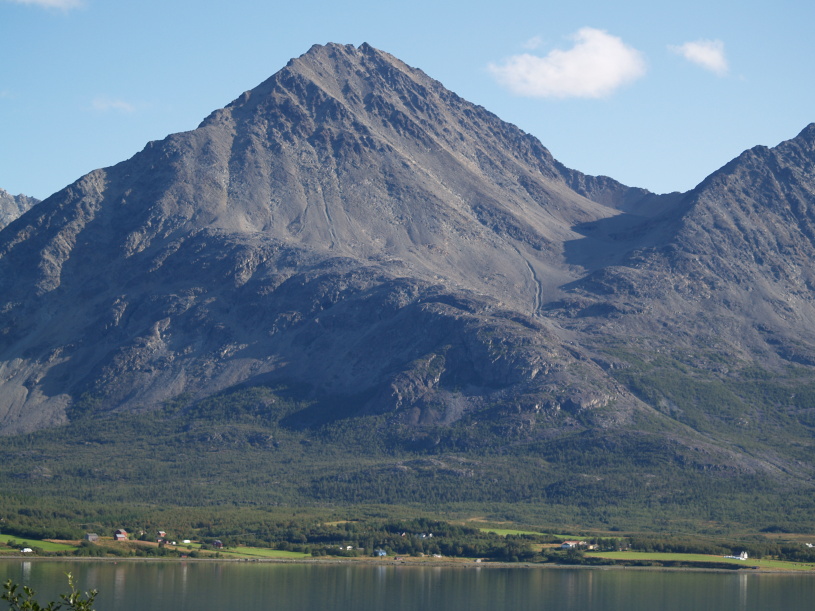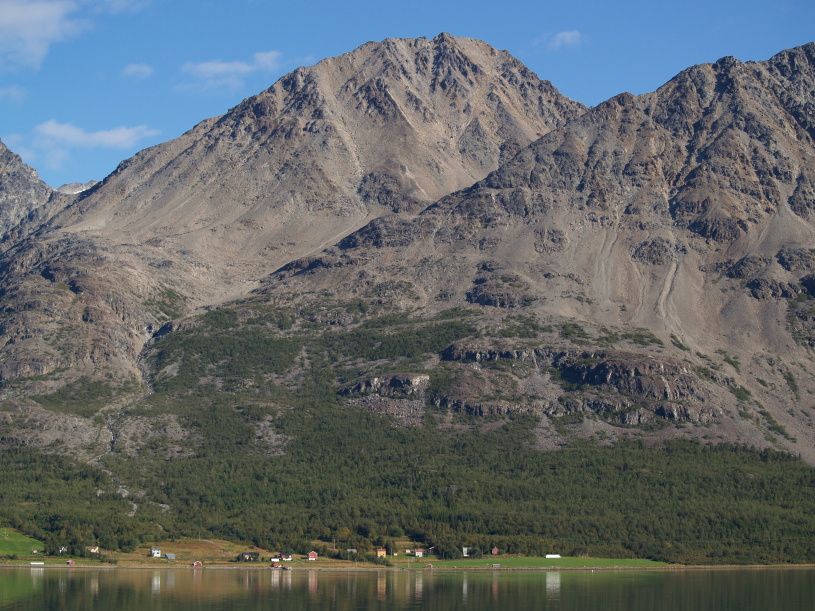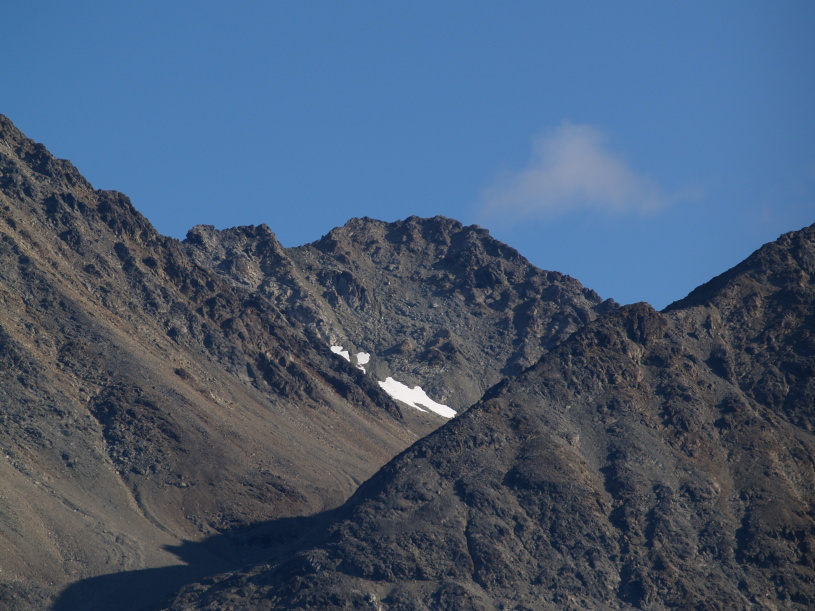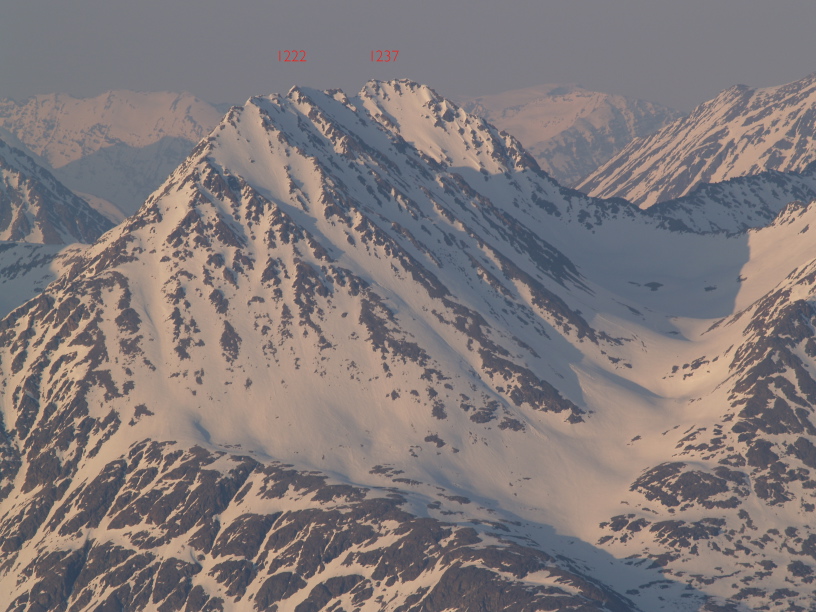
|
|

| The East summit was first climbed via the East ridge (not visible on this
picture) by
Elizabeth Main (a.k.a. Mrs.
Aubrey Le Blond) and the Swiss guides Emil and Josef Imboden on July 30th 1898. "Our next ascent, or rather brace of ascents, for we managed to get up a couple of peaks on the same day, was begun under rather depressing conditions. Encouraged by a few blue patches in the sky, we set out at 3.30 p.m. from Lyngseidet, rowed to the Tytteboerdal, and had walked barely a couple of hours when rain began. We found an inconvenient boulder which we agreed to speak of as a shelter, and flattening ourselves against its side we had a meal which may have been supper or breakfast, whichever one chose to consider it. Fortune favoured us, for, with the consumption of our last cup of hot tea, the rain abated, and in a gentle drizzle and a thick fog we continued our way. We had seen something of our goal — the Sofietind — during our ascent of the Isskartind, but not as much as we could have wished. Selecting the north aréte we began to go up it. Half an hour passed and we appeared to be making grand progress, not that we could see much by reason of the fog, but the pace was rapid. Then we came to a very steep bit indeed, and Imboden's prophetic mind considered that there was worse above. He untied himself and went on to look, while Emil and I remained clinging to various little ledges on the face of a precipice which began and ended in a seething mist. It was not a very cheerful position, especially about mid- night, for though at midnight in the north of Norway in summer it is daylight, the light has not the power and cheering warmth of midday. After a little time Imboden returned and announced:"We have simply to go down again!" He was much annoyed, and said that we were near the top of a gendarme or needle of rock on the ridge, and that it could not be descended on the other side, where, anyhow, the face of the mountain itself was quite sheer. So down we went, got on to the little glacier, traversed under the Sofietind, and made for the east ridge. This "went" well enough, but required the usual tactics necessary on most of these peaks, where an aréte can hardly ever be entirely kept to. Most of these mountains, while consisting of perhaps four main arétes, possess innumerable minor ones, each separated from the other by a couloir. In fact it is scarcely an exaggeration to say that people on a long rope, fearing each other's stones, can each have his own aréte or his own couloir. And here I may incidentally remark that as these peaks are rotten to a degree unknown in the Alps, a party climbing them should be small. I would not myself care to be one of more than three on a rope, and Imboden more than once said he would refuse to climb in the north, now that he knows the mountains, with more than two other persons besides himself. We traversed, went up chimneys, traversed back again, ascended a coloir for a little and finally struck the actual crest or backbone of the mounuin. This we were able to follow over firm rock. We felt that we must be near the top, but it was still veiled in mist. At last something began to loom out of the fog above us. Was it the summit, and was it — oh! was it a stone man calmly standing there waiting for us? We felt but too sure that it was, and rather limply we pressed on. But as the distance decreased doubts arose, then as the first man got still closer the doubts resolved themselves into joyful certainty. No! there was no cairn, "only a simpleton of a stone trying to make fools of us!" said Imboden, as we gathered together on the tiny summit, our first good "First Ascent" in Lapland. The persistence of the fog was very annoying. We had hoped to pass along the aréte connecting the Sofietind with the Sultind, but to embark on a descent over new ground of which we had seen nothing would have been folly. So, after Emil had accomplished the task which invariably fell to him — that of building stone men on new peaks as a record of our ascents — we began to go down at 2.30 A.M. by the same route. As we descended the fog cleared off. and we had a grand view of the magnificent Isskar glacier. This glacier is well seen from the Ulfsfjord, and it has thus been allotted a name, the Isskar, or ice-pass, from the apparent saddle at its head, in reality a snowy plateau. Mrs. Aubrey Le Blond: Mountaineering in The Land of The Midnight Sun (1908). The West summit was climbed by the same party on August 28th 1898. "There was one more peak still unascended at the head of the Isskar glacier, and this we forthwith decided to make for. It was a great contrast to the formidable-looking little mountain which we had just been up. It was composed of very loose rock, and as the angle was considerable we had to be very careful not to send down huge stones on each other. So the usual conversation might have been heard by any one so idiotic as to be in our neighbourhood at the time. We pointed out particularly unsafe stones of deceptive appearance to each other, we hid our heads behind projecting points like ostriches and announced that we were well sheltered, whereupon ensued a tremendous cannonade and a horrible mess on the white snow-slopes below. We reviled the shocking state of disrepair of the peaks, a condition absolutely unknown to the Alpine climber, who, poor innocent, fancies that the Bietsch- horn is rather a rotten mountain; and we finally gained the firmer rocks near the summit with only a few extra scratches on our hands, and a nail or two gone from our boots. The rock was yellow in colour, so we named the peak the Gyldentind." Mrs. Aubrey Le Blond: Mountaineering in The Land of The Midnight Sun (1908). |
